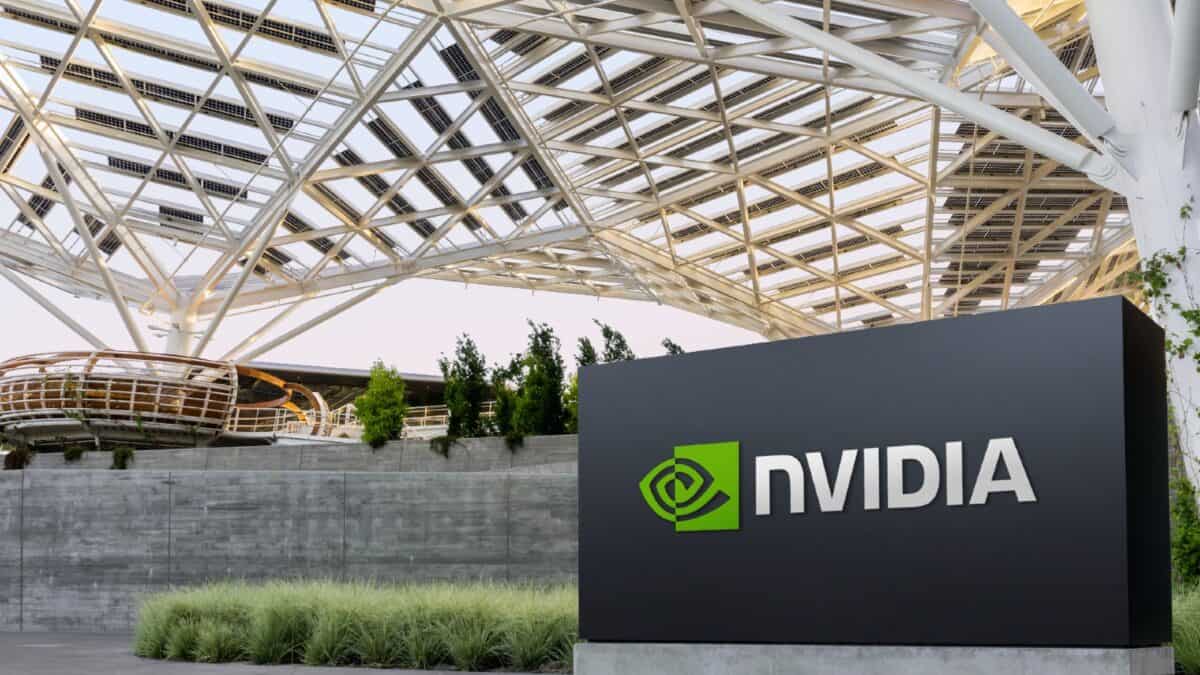Nvidia‘s (NASDAQ:NVDA) arguably one of the US stock market’s most exciting growth shares. It’s soared more than 200% in value over the past year as the buzz around artificial intelligence (AI) has rolled on.
Yet the business — whose high-power graphic processing units (GPUs) are helping fuel the AI boom — is also highly vulnerable to tough economic conditions. Revenues can dry up when companies and consumers feel the pinch.
But the outlook for Nvidia is sunny for at least the next three years, according to City analysts. Their earnings forecasts are shown below:
| Year | Earnings per share | Annual growth | Price-to-earnings (P/E) ratio |
|---|---|---|---|
| 2024 | 284.23 US cents | 136% | 49.2 times |
| 2025 | 405.77 US cents | 43% | 34.5 times |
| 2026 | 472.08 US cents | 16% | 29.6 times |
Of course, real-world profits can fall short of estimates, so numbers aren’t guaranteed. But then Nvidia also has a knack of posting forecast-beating results.
So how realistic are current profits projections? And should I buy Nvidia shares for my portfolio?
The bull case
As I say, the chipbuilder has a strong record of surpassing market expectations. Its second-quarter trading statement showed sales and underlying operating profit up 122% and 116% respectively year on year.
Amazingly, this was the seventh straight quarter in which results beat forecasts. Hardware demand for AI applications continued to surge, meaning Data Center sales leapt 154% from the same 2023 period.
AI’s the pillar around which investors flock to the chipbuilder. But there are other reasons to be bullish too, from the growth of cryptocurrency mining and gaming, to rising demand for cloud and high-powered computing.
Nvidia’s earnings could receive a boost too from Donald Trump’s return as US president. Looser regulations in areas like AI could give growth an extra shot in the arm. The firm may also indirectly benefit from new environmental standards that boost sectors like crypto and data centres.
The bear case
Nvidia’s canny ability of smashing forecasts also presents a problem. Investors expect stunning growth every time it updates the market, and if this doesn’t happen the share price can fall.
This happened following its second-quarter update in August. Sure, trading numbers trumped estimates, but Nvidia didn’t obliterate them as it’s done before. And so the share price dropped.
The business faces obstacles that mean the era of staggering growth may be behind us. Supply chain issues remain a strong possibility, while competition’s also increasing from other chipbuilders.
As mentioned at the top, the tech firm’s profits are also highly cyclical, leaving it in danger of a fresh economic downturn. Following Trump’s election victory, and with it the possibility of rising inflation and trade wars, this threat may have intensified.
The verdict
I believe Nvidia looks in good shape to grow earnings strongly in the short term and beyond. While it’s seen as a beacon for AI, it stands to gain substantially from growing global digitalisation more broadly.
Having said that, I have strong reservations about buying the chipmaker myself. And this is chiefly down to its enormous valuation.
Nvidia’s share price trades on a forward P/E ratio of almost 50 times. This is far ahead of the broader tech sector. And it fails to properly reflect those profits risks I’ve described as well.
On balance, I’d rather find other shares to buy for the AI revolution.








